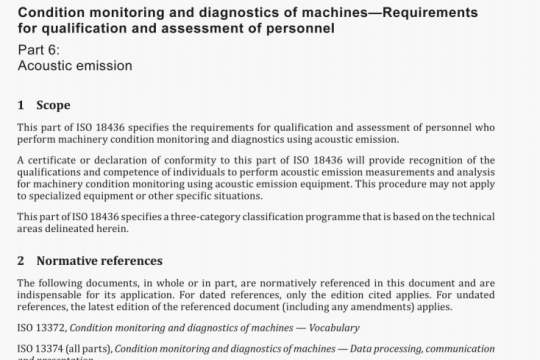ISO 1999:2013 pdf free
ISO 1999:2013 pdf free.Acoustics一Estimation of noise-induced hearing loss
The hearing of a non-noise-exposed population as a function of age depends on the degree to which other factors besides aging are inadvertently included; diseases, history of ototoxic drugs, and unknown noise exposure of occupational or non-occupational origin may modify the HTLA. Different approaches to screening such data have been used and the selection of the most appropriate database depends on the purpose of the application (see 6.2.4). This International Standard permits two databases databases A and B) to be used for HTLA in 6.1. Database A is fully specified, whereas database B is at the discretion of the user. Three examples of database B are presented.
NOTE The databases presented in Annexes A and B are from populations of European and North American countries. These populations may or may not be representative for the populations of other geographical areas.Even if there are no differences in natural aging between different ethnic populations, differences in life style,non-occupational noise exposure, incidence of disease, and ototoxic drugs are nevertheless liable to occur.
Database A derives from otologically normal persons, i.e. persons in a normal state of health who are free from all signs or symptoms of ear disease and from obstructing wax in the ear canals and who have no history of undue exposure to noise. The statistical distributions of the thresholds of such highly screened populations have been standardized in ISO 7029 separately for male and female populations.
Formulae for calculating database A are specified in A.1. The selected values of the statistical distribution of hearing threshold levels (in decibels) from database A are provided in Table A.3.
For database B, a set of data collected on a control population not occupationally exposed to noise of the country under consideration, but exposed to other risk factors to a degree similar to occupationally exposed populations, is recommended. When such an ideal control population is unavailable and in countries where risk factors such as non-occupational noise are more prevalent in occupationally exposed populations than in the general population, a totally unscreened control population may be preferable.ISO 1999 pdf download.




